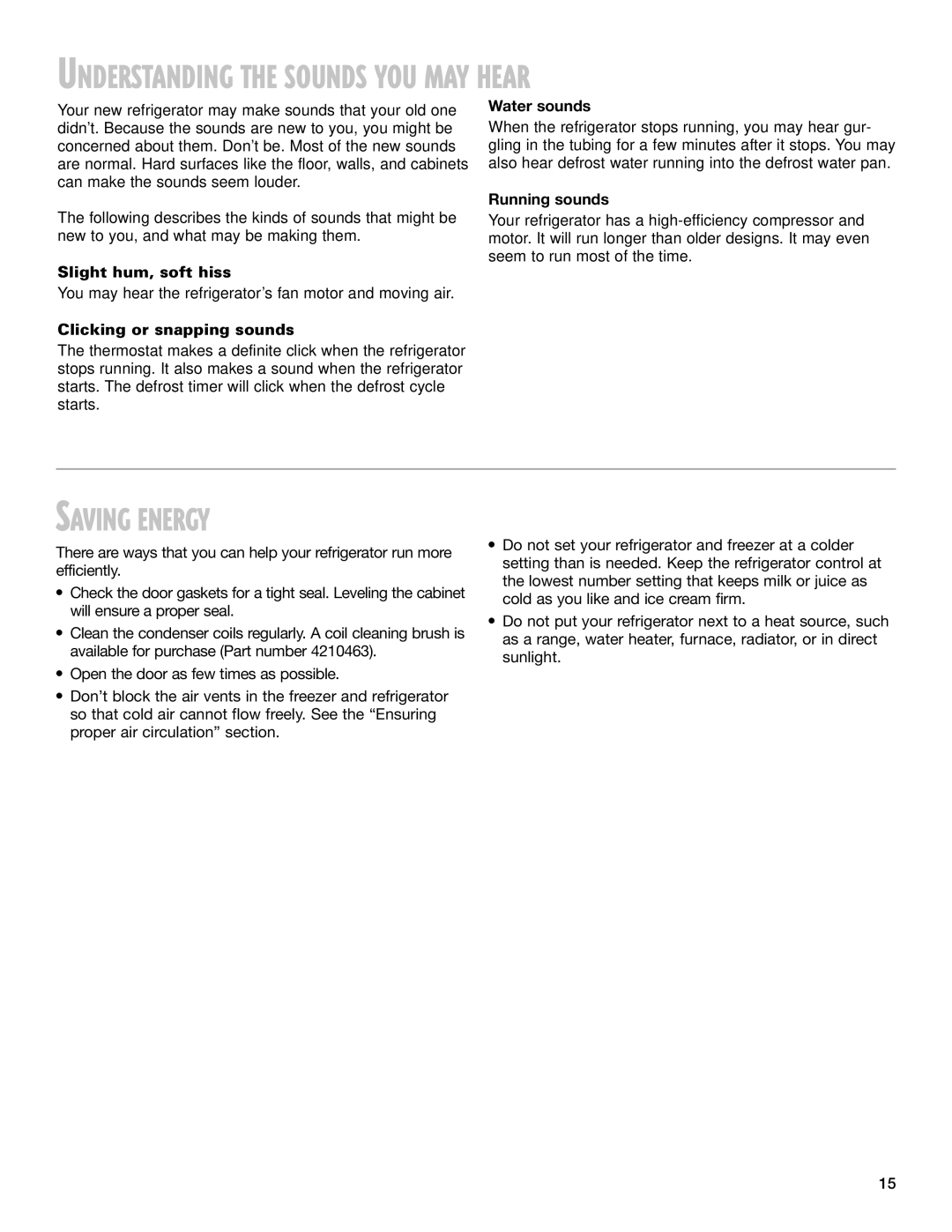UNDERSTANDING THE SOUNDS YOU MAY HEAR
Your new refrigerator may make sounds that your old one didn’t. Because the sounds are new to you, you might be concerned about them. Don’t be. Most of the new sounds are normal. Hard surfaces like the floor, walls, and cabinets can make the sounds seem louder.
The following describes the kinds of sounds that might be new to you, and what may be making them.
Slight hum, soft hiss
You may hear the refrigerator’s fan motor and moving air.
Clicking or snapping sounds
The thermostat makes a definite click when the refrigerator stops running. It also makes a sound when the refrigerator starts. The defrost timer will click when the defrost cycle starts.
Water sounds
When the refrigerator stops running, you may hear gur- gling in the tubing for a few minutes after it stops. You may also hear defrost water running into the defrost water pan.
Running sounds
Your refrigerator has a
SAVING ENERGY
There are ways that you can help your refrigerator run more efficiently.
•Check the door gaskets for a tight seal. Leveling the cabinet will ensure a proper seal.
•Clean the condenser coils regularly. A coil cleaning brush is available for purchase (Part number 4210463).
•Open the door as few times as possible.
•Don’t block the air vents in the freezer and refrigerator so that cold air cannot flow freely. See the “Ensuring proper air circulation” section.
•Do not set your refrigerator and freezer at a colder setting than is needed. Keep the refrigerator control at the lowest number setting that keeps milk or juice as cold as you like and ice cream firm.
•Do not put your refrigerator next to a heat source, such as a range, water heater, furnace, radiator, or in direct sunlight.
15
